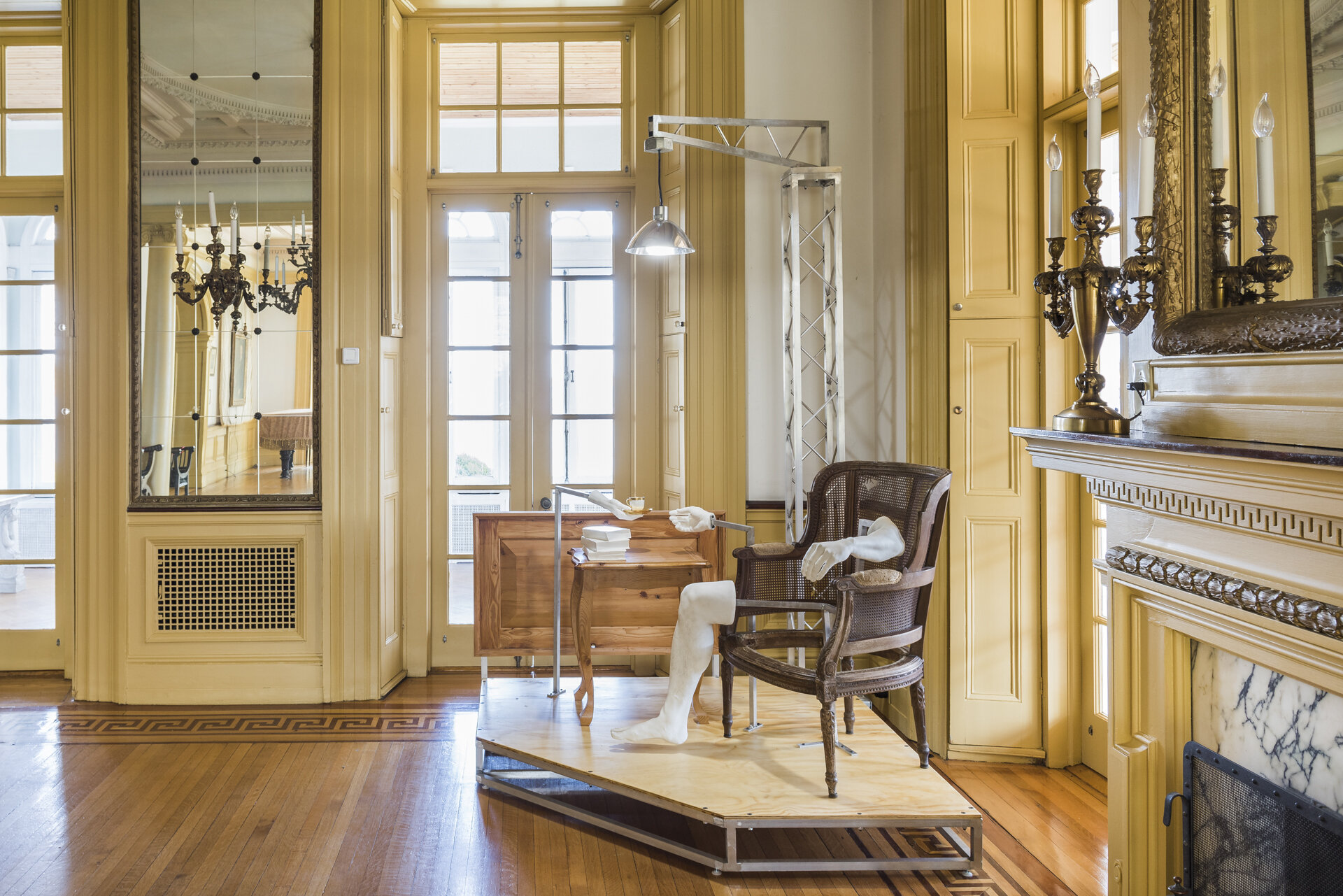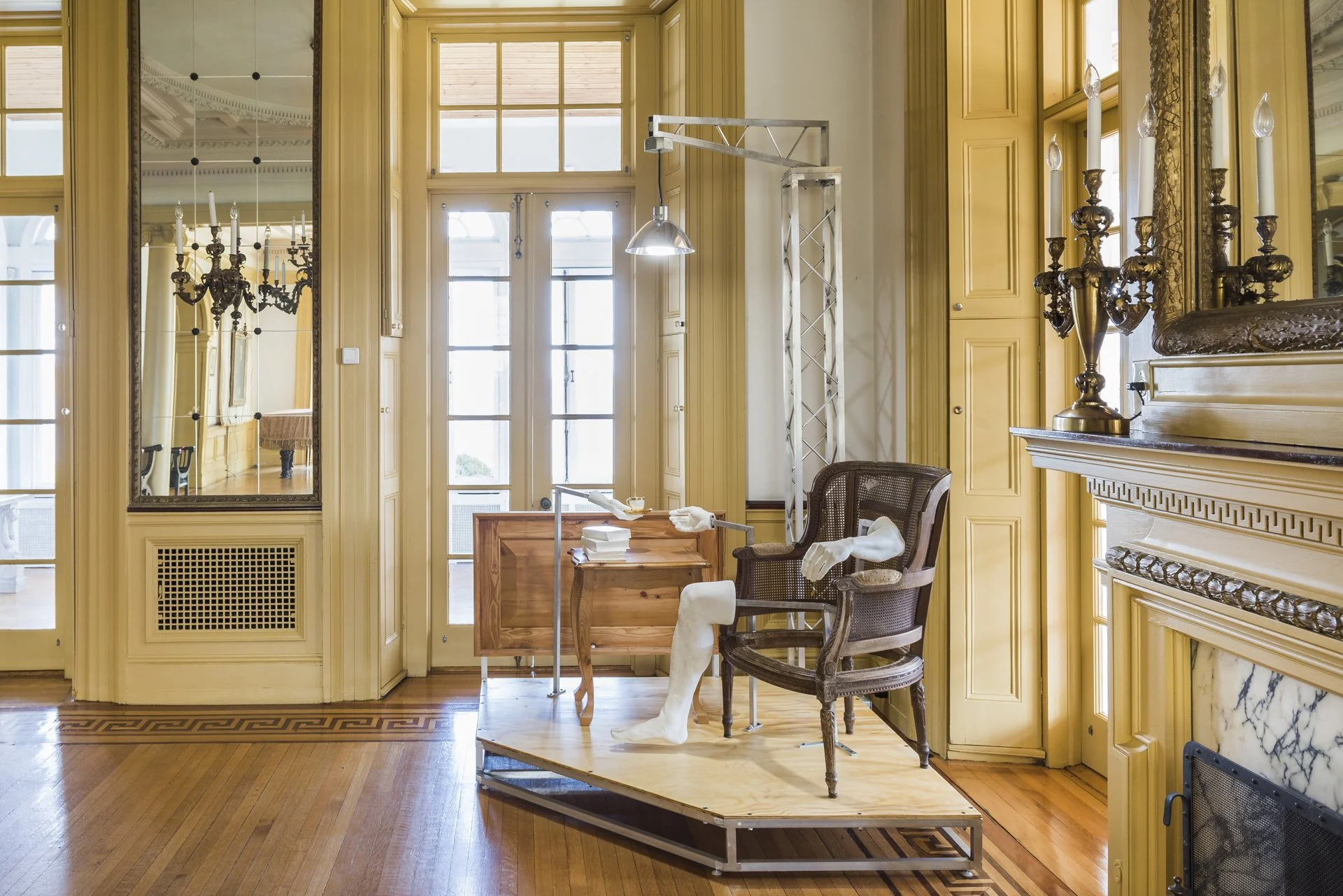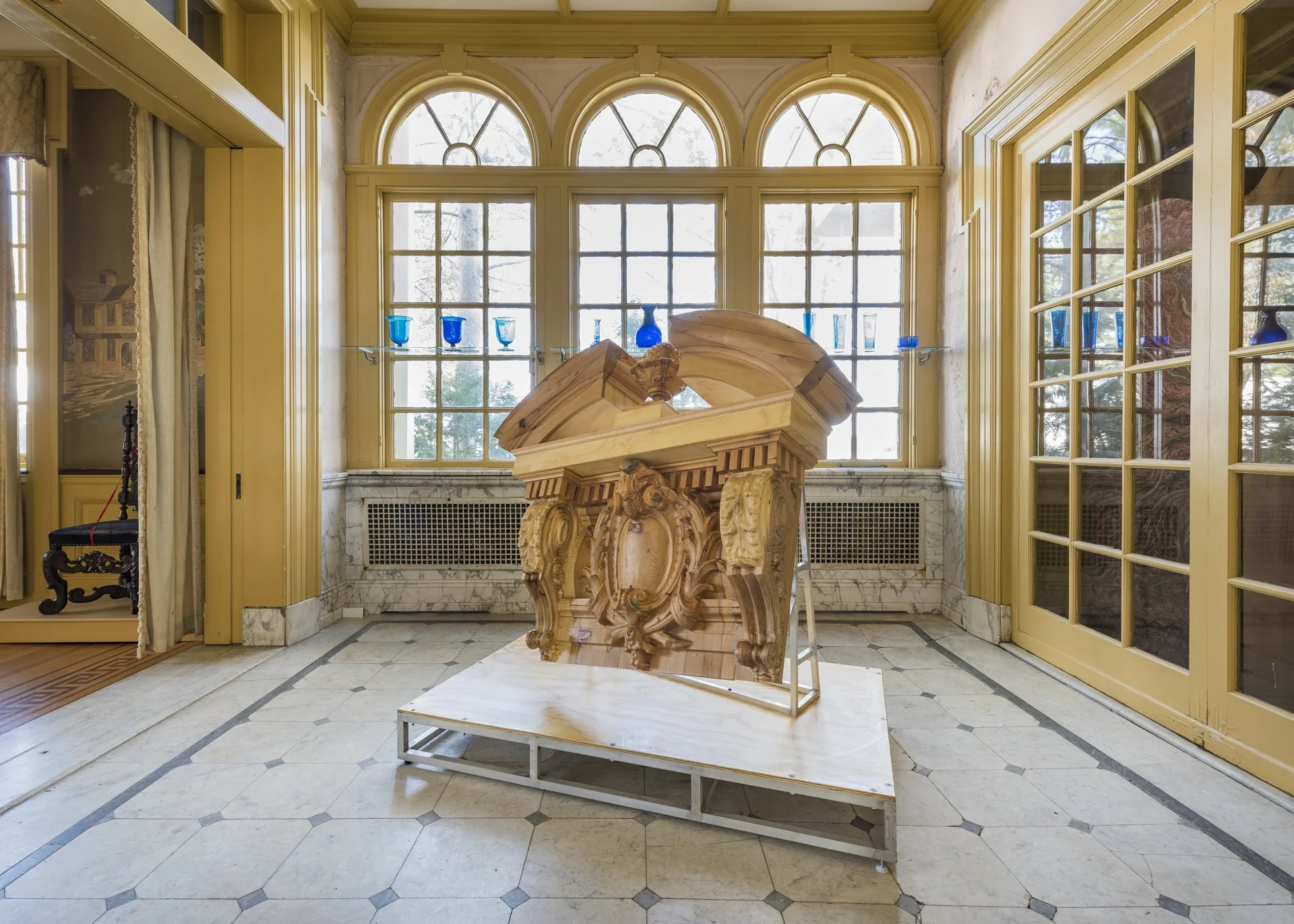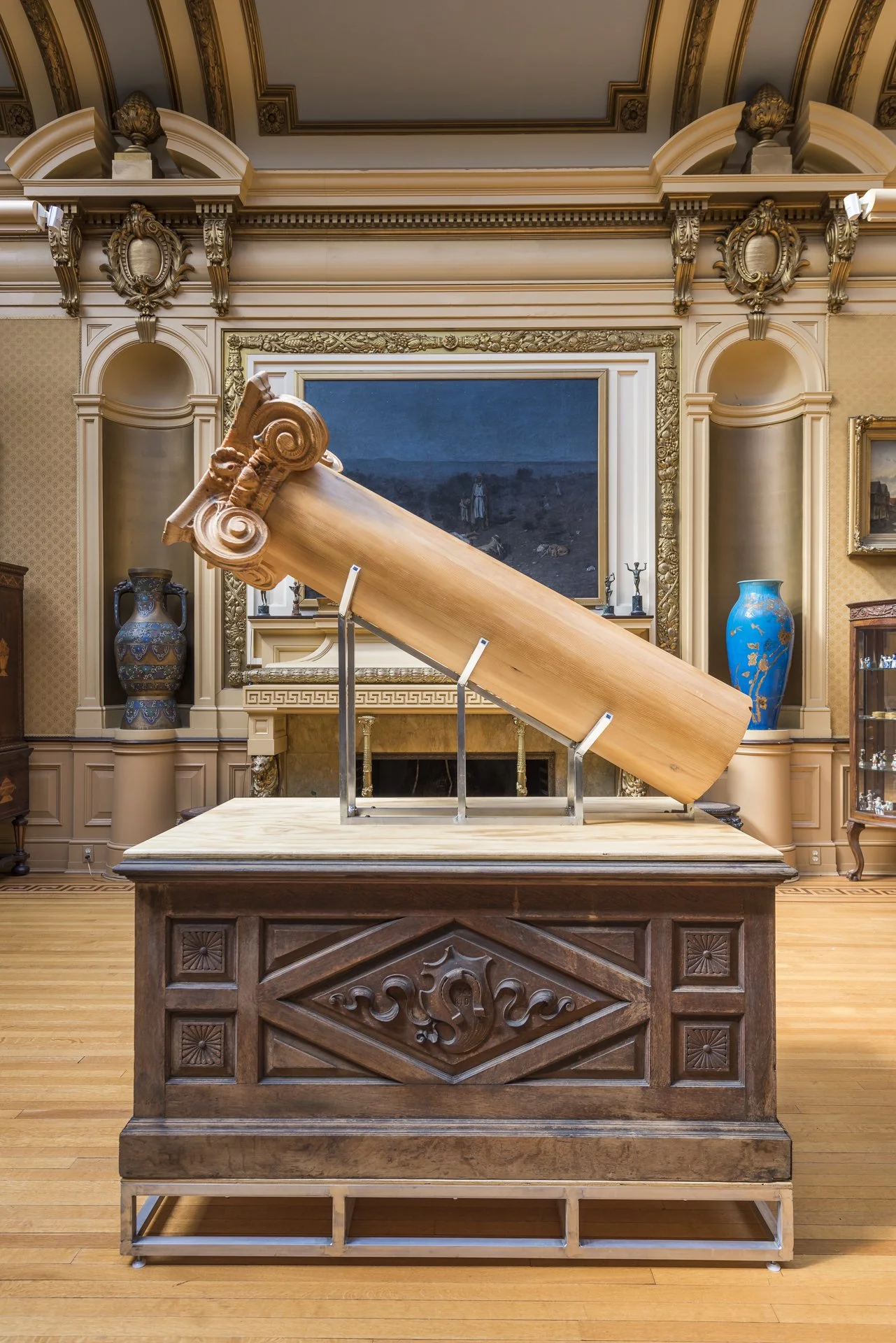Scenes for Empty Rooms, 2015
Over the course of several months, Lewis Colburn researched the history of the estate, as well as the ways the mansion has been renovated, restored and preserved since its construction in the 1850s. Parallel to this research, he captured 3D scans of many architectural details inside the mansion. These scans became the point of departure for the works which make up Scenes for Empty Rooms.
Much of Colburn’s work deals with history, and in particular the ways that museums and historic sites shape the meaning of objects through their strategies of display and presentation. If a replica is displayed alongside the original artifact, how are we as viewers to understand the difference? Without careful attention to labels and signs, the line between original and duplication becomes blurry. This idea of mixed realities, of fact and fiction blended side by side, lies at the core of Scenes for Empty Rooms. Imagine the works in this project as museum exhibits from another time, perhaps from a future in which these replicas and relics are all that remain of Glen Foerd’s Mansion.
Lewis Colburn’s work has been exhibited world-wide., at venues included the Pennsylvania Academy of Fine Arts, Hallwalls Contemporary Arts Center, the Pittsburgh Center for the Arts, the school 33 Art Center in Baltimore and South China Normal University. Colburn is a member of NAPOLEON, an artist-run project space in Philadelphia’s Rollins Building.











